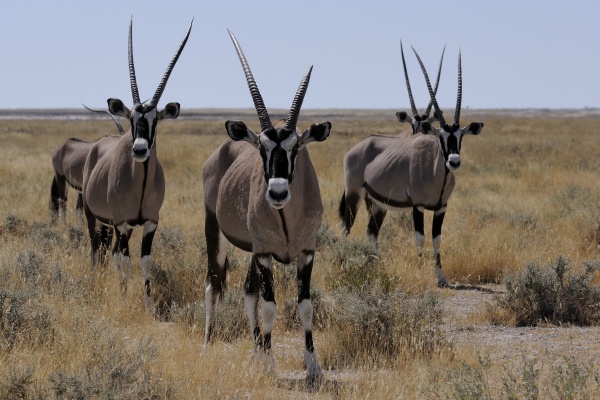Facts About Gemsbok, Beisa
The gemsbok, also known as the gemsbuck or South African oryx, is a distinctive antelope native to the arid regions of Southern Africa, including the Kalahari Desert. It is so iconic that it even appears on Namibia's coat of arms! Currently, there are about 373,000 gemsboks roaming in the wild.
The name "gemsbok" comes from Afrikaans and Dutch. Interestingly, despite some superficial similarities in appearance, it is not closely related to the chamois. These antelopes have a light brownish-grey to tan coat with distinct black markings and impressive, long, straight horns. They are the largest members of the Oryx genus, standing about 1.2 meters (approximately 4 feet) tall at the shoulder. Males are robust, weighing between 180 and 240 kg (400 to 530 pounds), while females are slightly lighter, weighing between 100 and 210 kg (220 to 460 pounds). Their spectacular horns, averaging around 85 cm (33 inches) in length, make them a popular target for hunters.
Gemsboks live in herds and are well-adapted to desert life, not needing to drink water regularly. They have a flexible diet, alternating between grazing and browsing depending on the season, and can sprint up to 60 km/h (37 mph). These antelopes are polygynous, meaning one dominant male mates with multiple receptive females in the herd. After a gestation period of about 270 days, mothers typically give birth to one or two calves.
In an intriguing twist, gemsboks were introduced to the Tularosa Basin in the United States back in 1969. Now, there are around 3,000 of them thriving there, largely because they face no natural predators like lions.

 Zimbabwe
Zimbabwe